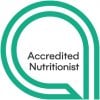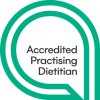It is difficult for small children with coeliac disease to understand the reasons for avoiding all gluten. Just like adults, there will be a range of reactions to small or large amounts of gluten that are mistakenly eaten. In general, children, started on gluten free diets for coeliac disease, adjust much better than adults to gluten free eating. Whatever the age of your child at diagnosis, you will need to take control initially and eventually teach your child how to manage their diet and health.
Setting up your kitchen……
Most kitchens will share gluten free food with wheat foods. When setting up a kitchen with small children in mind, it would be best to place the wheat containing foods on the higher shelves the child cannot reach, and the gluten free foods on the lower shelves. Ensure wheat flours, crackers and biscuits are enclosed in containers that do not allow escaped flour and crumbs to fall on the gluten free food below. If you have room in your kitchen to store your gluten free foods quite separately from the wheat foods, then do so.
You do not have to have completely separate food prep items as long as you wash the shared pots, pans, knives or cutting boards well, after using it with wheat food. Even toasters have recently been shown to carry less risk than previously thought.
Small children do need to be taught not to accept food from anyone outside of their family members. If they are given food, then their parent or carer needs to check it. Right from pre-school, they need to be taught not to share lunches and snacks at school or sporting events. As a parent you will do the initial communicating with family, carers, preschool, school teachers and friends parents. However, you should also nurture your child’s awareness of gluten free foods from as young as possible. This will help them to take control of their lives with more confidence to keep themselves safe.
Always cook gluten free pasta in boiled water that has not cooked gluten-containing pasta. If both types are being prepared in separate pots, always drain the gluten free pasta first and then wash the colander well before using it with the next lot of gluten free pasta. If you think your families washing skills are lax, then you may want to purchase an extra colander and a separate cutting board just for wheat products. Perhaps you can colour code them.
Toddler, ‘Everything in the mouth stage’ watch points……
You and those who care for your child need to be aware of what is in their environment.
- Regular play dough contains wheat flour. Provide a recipe that does not or make it yourself and provide the play dough to your child’s carers.
- Childcare centres often make a cheap paint from starch, water and colour. Ensure maize starch is used when making the paint.
- Hand eye co-ordination is often developed by threading pasta onto cord to make necklaces or Christmas tree string decorations. Sometimes pasta is glued to paper to create pictures. Ensure its GF pasta as many children crunch…. one in the mouth…. and 5 on the string!
Sleep overs, sports, celebrations, birthday parties and last-minute plan changes……
- Have a Tupperware box of emergency food in the car; things like rice cakes, nuts and dried fruit, GF crackers and GF snack bars.
- The sport coach often offers a bag of lollies to the kids at the end of training. Either purchase yourself, or suggest to the coach, a brand that is gluten free to share.
- Get to know the parents of your child’s close friends and start to educate them politely about gluten free eating.
- Once your child is of the age when their friend begs them to come for a sleepover after Saturday sport, perhaps you may add a container of breakfast cereal or GF dried pasta to your emergency box, so you can pop it into the hand of the other mother/family, along with some of your other emergency snacks. Push fresh fruit and vegetables and plain meat options.
- If sleepovers become more frequent, either with relatives or friends, ask if they can keep some suitable GF foods on hand.
- Frozen GF bread, GF dried pasta, GF breakfast cereal and GF crackers
- If they want a quick takeout meal the night of the sleepover:- know what shops in their local area do a GF pizza or other GF takeout that you could advise on…….
- You may need to supply at least one GF food option at birthday parties and if lolly bags are given, have a suitable option to swap in for your child.
- Organise a safe treat that the school teacher can keep in the class room, so your child has a treat option, when wheat birthday cakes etc are brought in by other children.
- You don’t want to ingrain into your child that they can never eat away from home, so teach them to read a food label and involve them in the process of vetting foods at takeaway shops and restaurants.
- Involve them in food choices and food preparation at home
Children with coeliac disease can grow up happy and healthy and can participate in the activities around them. There just needs to be a little more food pre-planning for events away from home, camps and travel. Parents often worry more than the kids, making sure their child has a gluten free option for most situations. Involve your child in the preparations so then can naturally take this over as they go into their teenage and young adult years.



